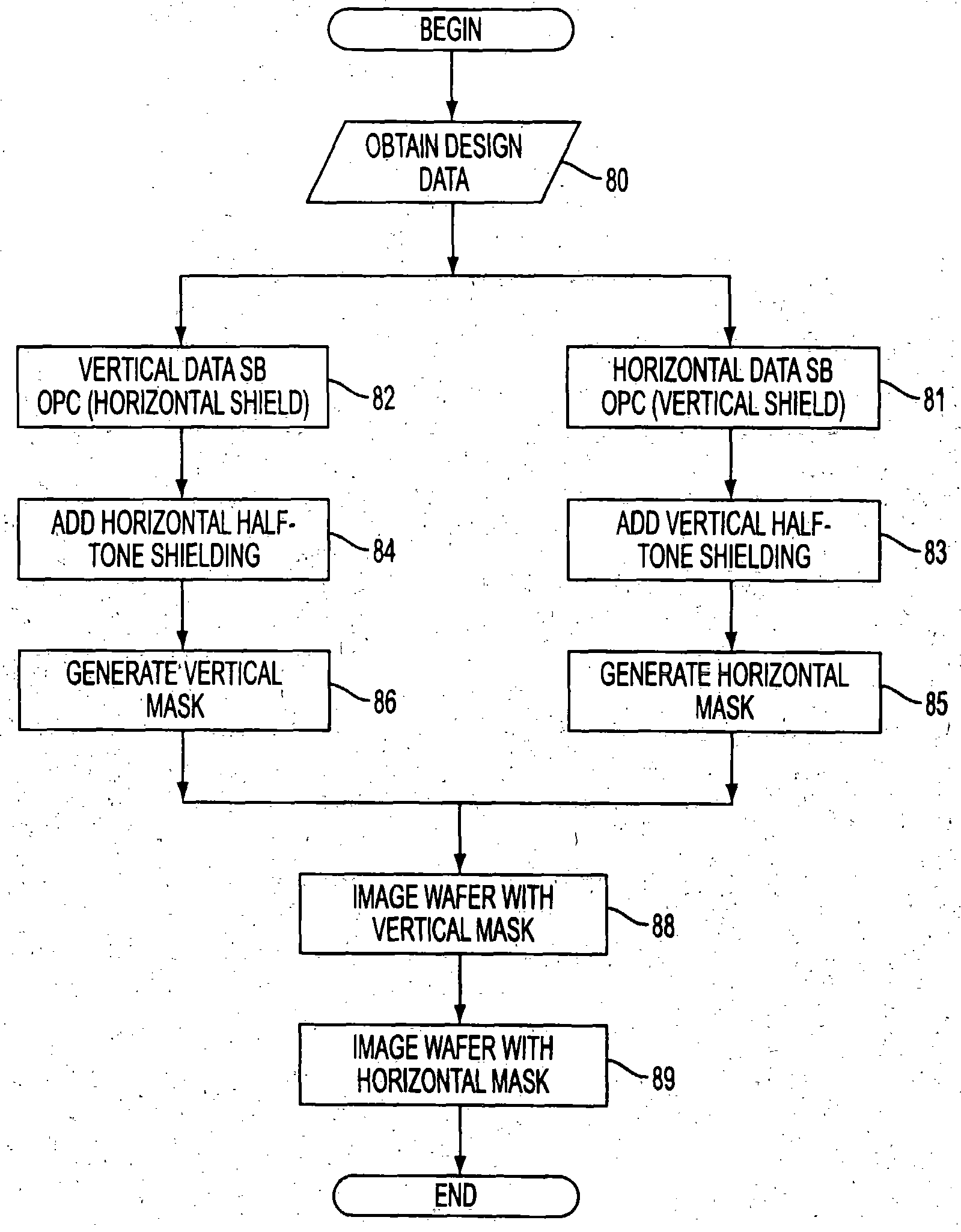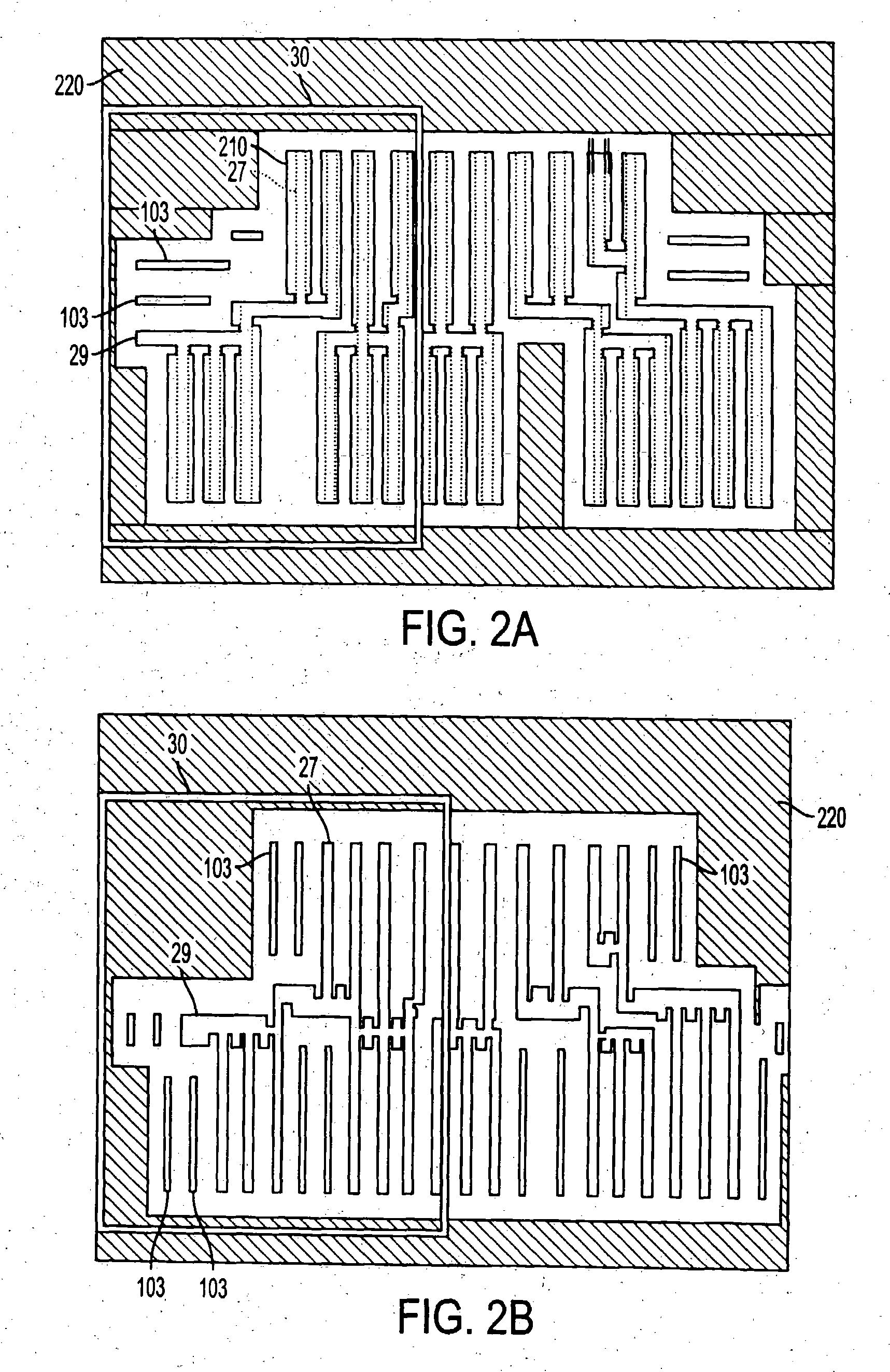Orientation dependent shielding for use with dipole illumination techniques
a dipole illumination and orientation-dependent shielding technology, applied in the field of photolithography, can solve the problems of reducing the size of an integrated circuit, cd (critical dimension) of the corresponding mask pattern approaching the resolution limit of the optical exposure tool, and single illumination only enhancing resolution
- Summary
- Abstract
- Description
- Claims
- Application Information
AI Technical Summary
Benefits of technology
Problems solved by technology
Method used
Image
Examples
Embodiment Construction
[0053] In accordance with the present invention, the negative effects of lens flare are significantly reduced by utilizing a sub-resolution grating block (SGB) in the background areas of the mask design. As explained in more detail below, the SGB comprises a plurality of non-resolvable shielding lines disposed in the background portion of the mask, which have an orientation orthogonal to the features being imaged by the given mask. The non-resolvable shielding lines do not print on the wafer, but do provide the necessary shielding effect required to eliminate the effects of flare.
[0054] Prior to a description of exactly how the SGB is applied to a given mask, a brief explanation regarding the theory behind the present invention is provided. In order to reduce the background light level, it is necessary to control the amount of the zero order (i.e., DC level) light transmitted by the reticle. Long-range flare does not vary over lateral-distances comparable to the wavelength (>0.5 mm...
PUM
| Property | Measurement | Unit |
|---|---|---|
| wavelength | aaaaa | aaaaa |
| wavelength | aaaaa | aaaaa |
| width | aaaaa | aaaaa |
Abstract
Description
Claims
Application Information
 Login to View More
Login to View More - R&D
- Intellectual Property
- Life Sciences
- Materials
- Tech Scout
- Unparalleled Data Quality
- Higher Quality Content
- 60% Fewer Hallucinations
Browse by: Latest US Patents, China's latest patents, Technical Efficacy Thesaurus, Application Domain, Technology Topic, Popular Technical Reports.
© 2025 PatSnap. All rights reserved.Legal|Privacy policy|Modern Slavery Act Transparency Statement|Sitemap|About US| Contact US: help@patsnap.com



